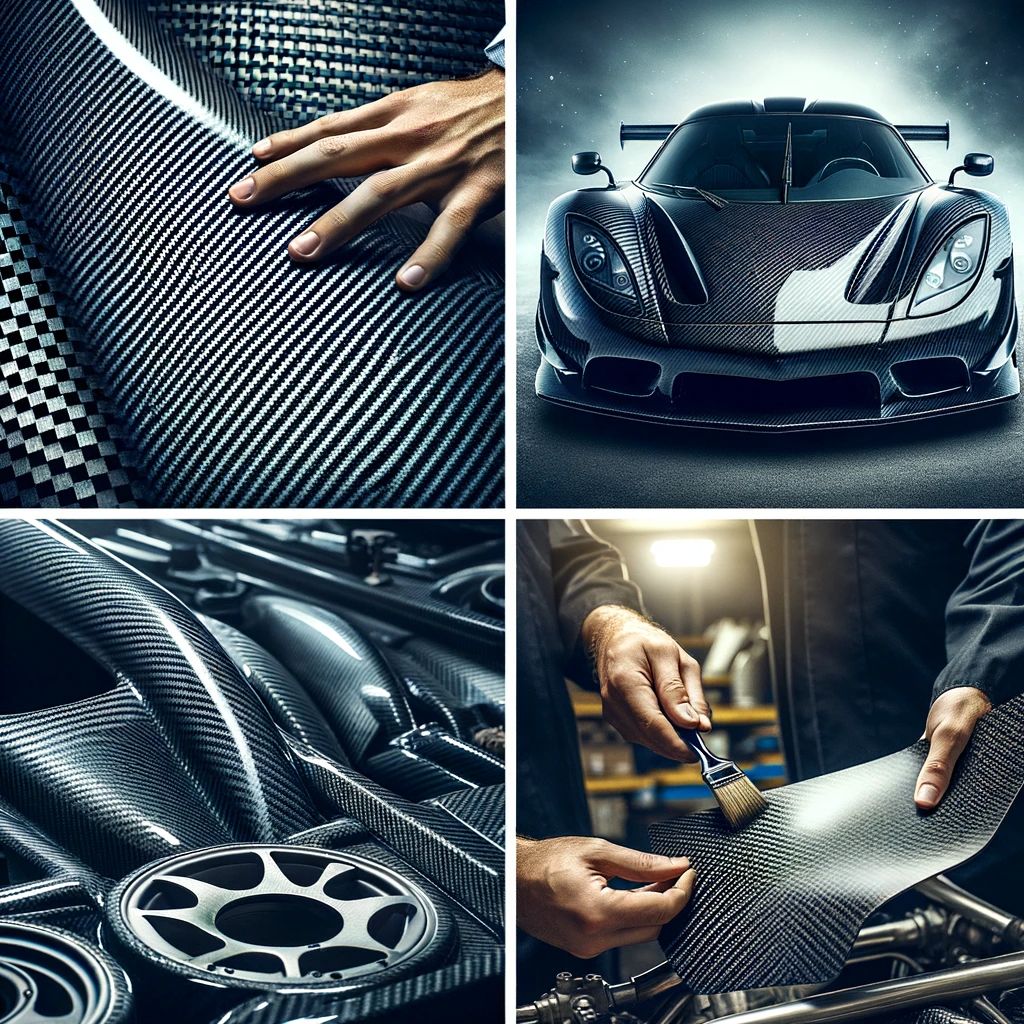
Unraveling the Threads of Innovation: Carbon Fiber's Role in Automotive Advancements
In the automotive industry, the race for efficiency, speed, and durability is unending. Carbon fiber is at the forefront of this race, revolutionizing how cars are built and perform. This lightweight champion is steering the future of automotive design and manufacturing towards new horizons of innovation.
A Light Touch with Heavy Impact
The essence of carbon fiber lies in its unique composition—strong, woven strands of carbon atoms, yielding a material that's lighter than aluminum yet stronger than steel. This remarkable strength-to-weight ratio catapults carbon fiber into the limelight for performance vehicles and everyday cars alike. It's no wonder that what started in the realm of elite racing has shifted gears into the mainstream auto market.
Shaping the Future
The malleability of carbon fiber presents another significant advantage. It can be molded into complex shapes that metal can't achieve without compromising integrity or aesthetics. This flexibility opens up a new world of design possibilities, allowing for aerodynamic forms that reduce drag and enhance fuel efficiency.
Fuel Efficiency and Emissions Reduction
In the quest for greener transportation, carbon fiber plays a pivotal role. By slashing vehicle weight, it directly contributes to increased fuel efficiency and decreased emissions. This is particularly beneficial as we accelerate towards an era of stringent environmental regulations and a collective push for cleaner air.
The Electric Vehicle Synergy
Electric vehicles (EVs) and carbon fiber are a match made in automotive heaven. The lighter the vehicle, the less energy it needs to travel the same distance. Carbon fiber's application in EVs extends the range per charge, one of the most crucial parameters for consumers and manufacturers.
Challenges in the Fast Lane
Despite its many benefits, carbon fiber faces challenges in widespread adoption, primarily due to its high production costs. However, with continuous innovation in manufacturing processes, it's becoming more accessible. The automotive industry is witnessing a significant reduction in costs, making carbon fiber a more viable option for mass-produced vehicles.
A Sustainable Path Forward
The environmental footprint of carbon fiber is also under scrutiny. Efforts are accelerating to make its production more sustainable and to develop effective recycling methods for carbon fiber components, ensuring that this material is as kind to the planet as it is to performance.
In Conclusion
The integration of carbon fiber into automotive innovation is more than a trend—it's a transformative shift. As we drive into the future, the material's exceptional properties promise to redefine efficiency, performance, and sustainability in the automotive industry. Carbon fiber's role in this revolution is just beginning to rev up, and the journey ahead looks nothing short of exhilarating.
A Light Touch with Heavy Impact
The essence of carbon fiber lies in its unique composition—strong, woven strands of carbon atoms, yielding a material that's lighter than aluminum yet stronger than steel. This remarkable strength-to-weight ratio catapults carbon fiber into the limelight for performance vehicles and everyday cars alike. It's no wonder that what started in the realm of elite racing has shifted gears into the mainstream auto market.
Shaping the Future
The malleability of carbon fiber presents another significant advantage. It can be molded into complex shapes that metal can't achieve without compromising integrity or aesthetics. This flexibility opens up a new world of design possibilities, allowing for aerodynamic forms that reduce drag and enhance fuel efficiency.
Fuel Efficiency and Emissions Reduction
In the quest for greener transportation, carbon fiber plays a pivotal role. By slashing vehicle weight, it directly contributes to increased fuel efficiency and decreased emissions. This is particularly beneficial as we accelerate towards an era of stringent environmental regulations and a collective push for cleaner air.
The Electric Vehicle Synergy
Electric vehicles (EVs) and carbon fiber are a match made in automotive heaven. The lighter the vehicle, the less energy it needs to travel the same distance. Carbon fiber's application in EVs extends the range per charge, one of the most crucial parameters for consumers and manufacturers.
Challenges in the Fast Lane
Despite its many benefits, carbon fiber faces challenges in widespread adoption, primarily due to its high production costs. However, with continuous innovation in manufacturing processes, it's becoming more accessible. The automotive industry is witnessing a significant reduction in costs, making carbon fiber a more viable option for mass-produced vehicles.
A Sustainable Path Forward
The environmental footprint of carbon fiber is also under scrutiny. Efforts are accelerating to make its production more sustainable and to develop effective recycling methods for carbon fiber components, ensuring that this material is as kind to the planet as it is to performance.
In Conclusion
The integration of carbon fiber into automotive innovation is more than a trend—it's a transformative shift. As we drive into the future, the material's exceptional properties promise to redefine efficiency, performance, and sustainability in the automotive industry. Carbon fiber's role in this revolution is just beginning to rev up, and the journey ahead looks nothing short of exhilarating.



